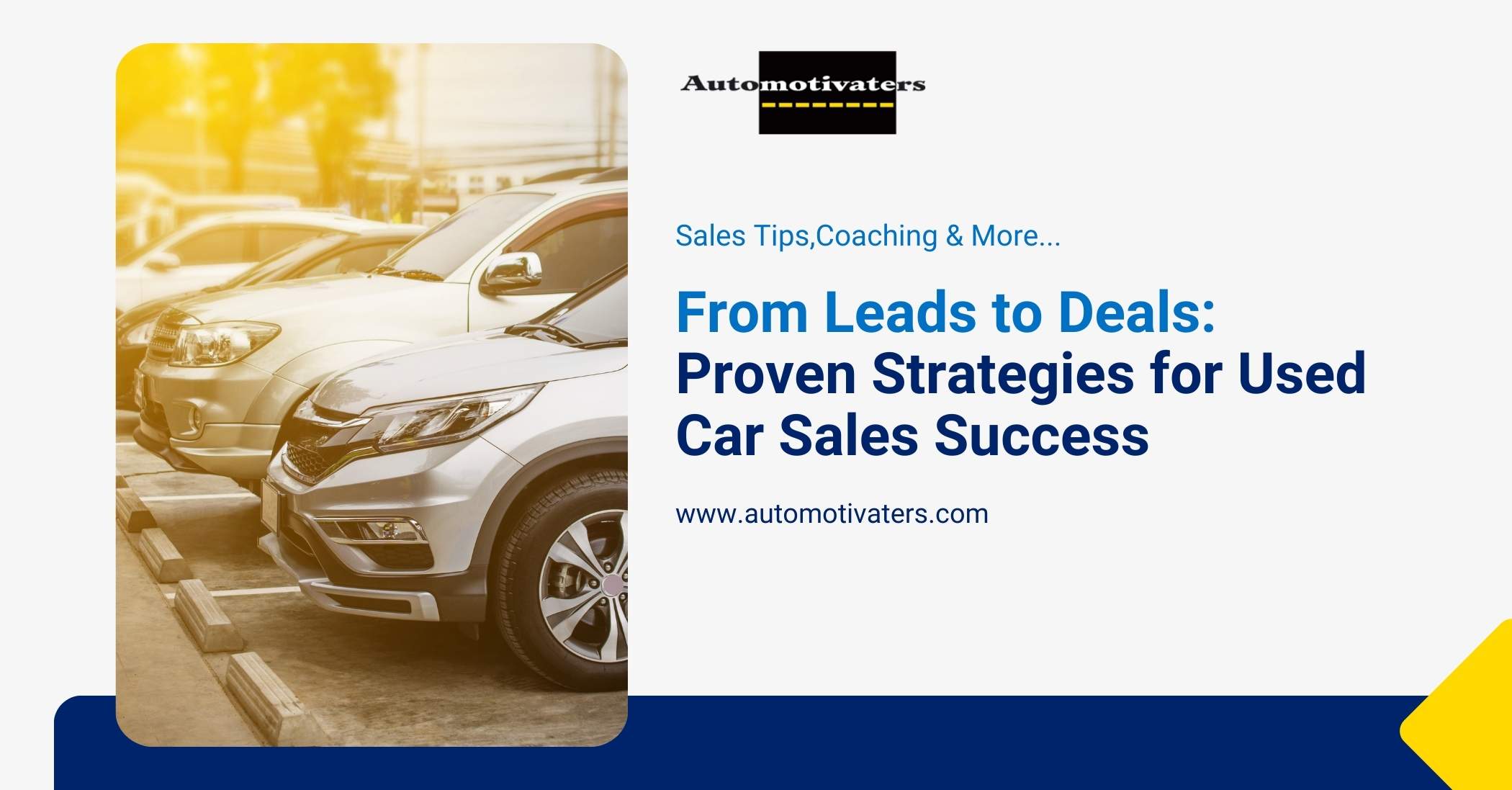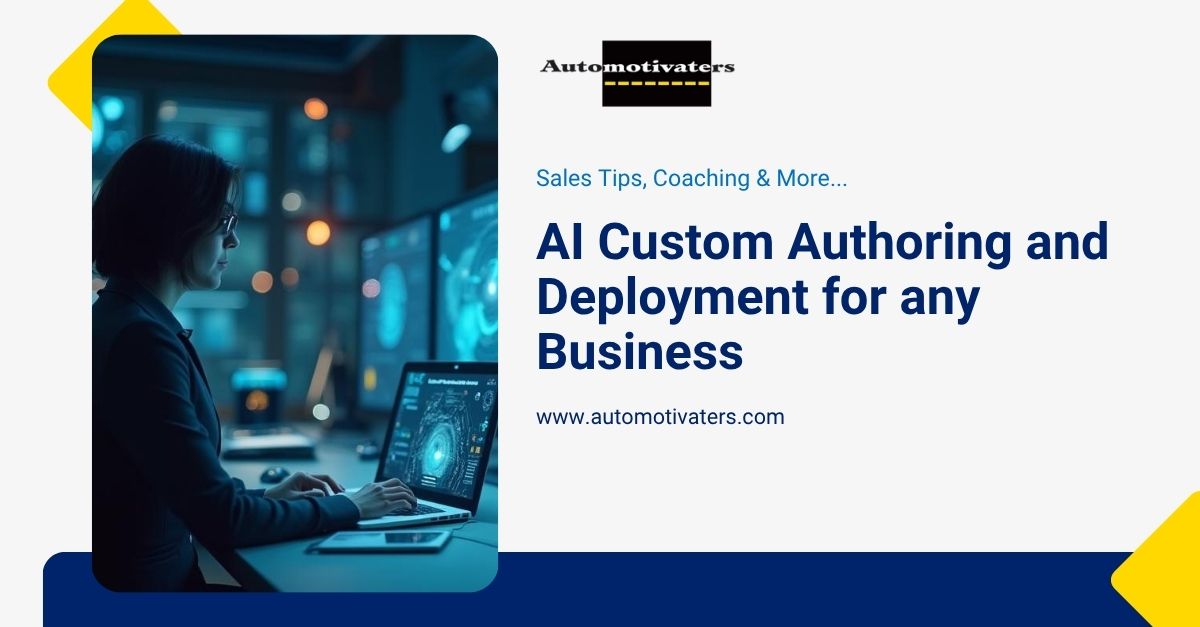As a seasoned automotive professional or new to the business sales consultant, you know the thrill of closing a deal on a used car. But in today’s competitive market, it’s not just about making a sale—it’s about maximizing every opportunity and boosting your conversion rates. Let’s explore game-changing strategies that will transform your approach and drastically improve your results.
Understanding the Used Car Market
Before we discuss specific tactics, let’s appreciate the unique landscape of used car sales. Unlike new vehicles, each pre-owned car has its own story and character. This presents both challenges and opportunities for savvy sales consultants. The key is to embrace these differences and use them to your advantage.
Remember, every customer walking onto your lot is looking for value, reliability, and a touch of excitement. Your job is to be the guide that helps them find the perfect match. But how do you do that consistently and effectively? Let’s break it down.
Master Your Inventory
Knowledge of your inventory is the foundation of any successful used car sales strategy. This goes beyond memorizing specs and features. It’s about understanding the unique selling points of each vehicle on your lot.
Commit to spending at least 30 minutes each day familiarizing yourself with your current inventory. Walk the lot, sit in the cars, and imagine the perfect customer for each vehicle. What story can you share about this car that will resonate with a potential buyer?
The Art of Active Listening
One of the most underrated skills in sales is the ability to listen to your customers truly. Too often, salespeople are so eager to pitch that they miss crucial information the buyer shares.
For your subsequent customer interactions, make a conscious effort to listen more than you speak. Ask open-ended questions and pay attention to what they say and how they say it. What emotions are driving their purchase decision?
Building Trust Through Transparency
In the world of used cars, trust is everything. Customers often have preconceived notions about “pushy salespeople” or “hidden problems.” Your job is to shatter these stereotypes through unwavering honesty and transparency.
Create a “Full Disclosure” document for each vehicle, detailing its history, any repairs or issues, and why you believe it’s a great value. Share this proactively with customers, even before they ask. This level of openness can be a game-changer in building trust.
The Power of Storytelling in Sales
Every used car has a story. Maybe it was lovingly maintained by a retired couple, or perhaps it was the reliable workhorse for a growing family. Learn to weave these narratives into your sales discussions.
Choose three cars from your lot and craft a compelling story for each. Practice telling these stories to your colleagues. The goal is to create an emotional connection between the customer and the vehicle.


Mastering the Art of the Test Drive
The test drive is your moment to shine. It’s not just about letting the customer experience the car; it’s about creating an experience they won’t forget the ride and the handling.
Plan your test drive routes carefully. Include a mix of road types that showcase the vehicle’s strengths. During the drive, point out specific features at relevant moments. For example, demonstrate the smooth acceleration on a highway on-ramp or the tight turning radius in a parking lot.
Leveraging Technology in the Sales Process
In today’s digital age, technology can be your best friend in the sales process. From virtual tours for out-of-town customers to apps that compare vehicles side-by-side, embracing tech can set you apart.
Identify one new piece of technology or software that you can incorporate into your sales process this month. It could be as simple as using a tablet to show customers vehicle comparisons or as advanced as implementing a CRM system to track customer interactions.
The Follow-Up: Where Deals Are Won and Lost
Many salespeople focus all their energy on the initial interaction, forgetting that the follow-up is often where deals are closed. A well-timed, personalized follow-up can differentiate between a sale and a missed opportunity.
Create a systematic follow-up process. This should include:
- A thank-you email or text within 24 hours of the initial visit
- A phone call 2-3 days later to address any questions
- A “thought of you” message a week later, perhaps sharing a positive review of the car they were interested in.
Every customer is unique, and your sales approach should reflect that. The ability to read people and adapt your style accordingly is a hallmark of top-performing salespeople.
Create three customer personas (e.g., the budget-conscious family, car enthusiast, and first-time buyer). Develop a tailored sales pitch for each persona that addresses their specific needs and concerns. Practice these pitches with your colleagues and refine them based on feedback.
The Psychology of Pricing: Perception is Reality
Understanding the psychology behind pricing can give you a significant advantage. Pricing is not just about the number; it’s about how that number is presented and perceived.
Strategy: Experiment with different pricing strategies. For example, instead of listing a car at $15,000, try $14,995. You can also break down the price into monthly payments to make it more digestible. Always be prepared to justify your pricing by highlighting each vehicle’s value proposition.
Building a Referral Network
Happy customers are your best salespeople. Implementing a strong referral program can significantly boost your conversion rates and lead to a steady stream of qualified prospects.
Develop a formal referral program with incentives for both the referrer and the new customer. For example, the referrer could receive a cash bonus, a free service package, or a discount on their next purchase. Make sure to follow up with every customer after purchase to request referrals.


Continuous Learning and Improvement
The automotive industry is constantly evolving, and so should your sales techniques. It is crucial to stay informed about industry trends, new technologies, and changing consumer preferences.
Commit to reading at least one industry publication or attending a monthly training seminar. Share your learnings with your team and discuss how to implement new strategies.
The Power of Social Proof
In the age of online reviews and social media, leveraging social proof can significantly impact your conversion rates. Positive experiences from other customers can be incredibly persuasive.
Actively collect and showcase customer testimonials. In your dealership, create a “Wall of Happy Customers” with photos and quotes. Share success stories on your social media platforms and website.
Creating Urgency Without Pressure
One of the trickiest aspects of sales is creating a sense of urgency without seeming pushy. The key is to focus on the benefits of acting now rather than the fear of missing out.
Technique: Instead of saying, “This deal won’t last long,” try something like, “By taking advantage of this offer today, you’ll be able to enjoy your new car this weekend.” It’s subtle, but it shifts the focus to the positive outcome of making a quick decision.
The Art of Negotiation: Win-Win Scenarios
Negotiation doesn’t have to be adversarial. The best salespeople know how to create win-win scenarios that satisfy the customer and the dealership.
Role-play negotiation scenarios with your colleagues. Practice finding creative solutions that meet the customer’s needs while maintaining profitability for the dealership.
Remember, sometimes throwing in a small extra (like a tank of gas or a free detail) can seal the deal without significantly impacting your bottom line.
The Follow-Through: Delivering on Promises
Your job isn’t done when the contract is signed. Ensuring a smooth delivery process and following up post-purchase can lead to repeat business and referrals.
- Create a post-sale checklist that includes:
- A personal call to ensure the customer is happy with their purchase
- A scheduled follow-up for their first service appointment
- A request for an online review or testimonial
Putting It All Together: Your Roadmap to Success
Now that we’ve explored these strategies, it’s time to implement them. Remember, mastering used car sales is a journey, not a destination. It requires consistent effort, continuous learning, and a willingness to adapt.
Challenge yourself to implement at least three new strategies from this blog in the next 30 days. Track your results and adjust as necessary. Share your successes and learnings with your team to create a culture of excellence and continuous improvement.
The road to increased conversion rates may have twists and turns, but with these strategies in your toolkit, you’re well-equipped for the journey. Remember, every interaction is an opportunity not just to make a sale but to create a lasting relationship with a customer.
Are you prepared to elevate your used car sales performance? The tools for success are at your disposal. Your potential for growth and achievement is limitless – it’s time to seize the opportunity and distinguish yourself in the industry.
Dedication and the right strategies can transform your sales approach and achieve remarkable results. The path to success is clear; all that’s left is for you to take that first step and commit to excellence.









